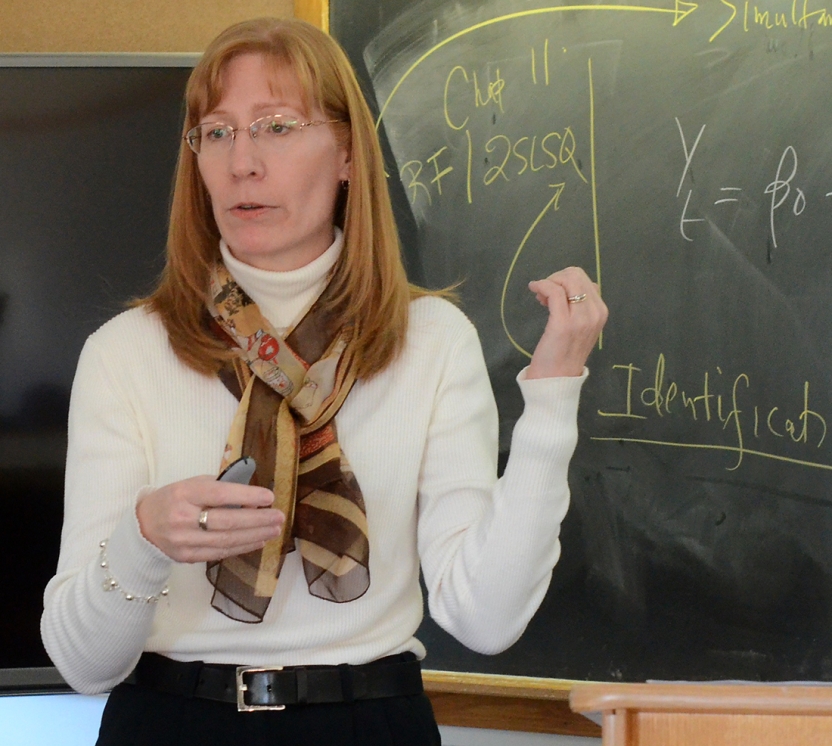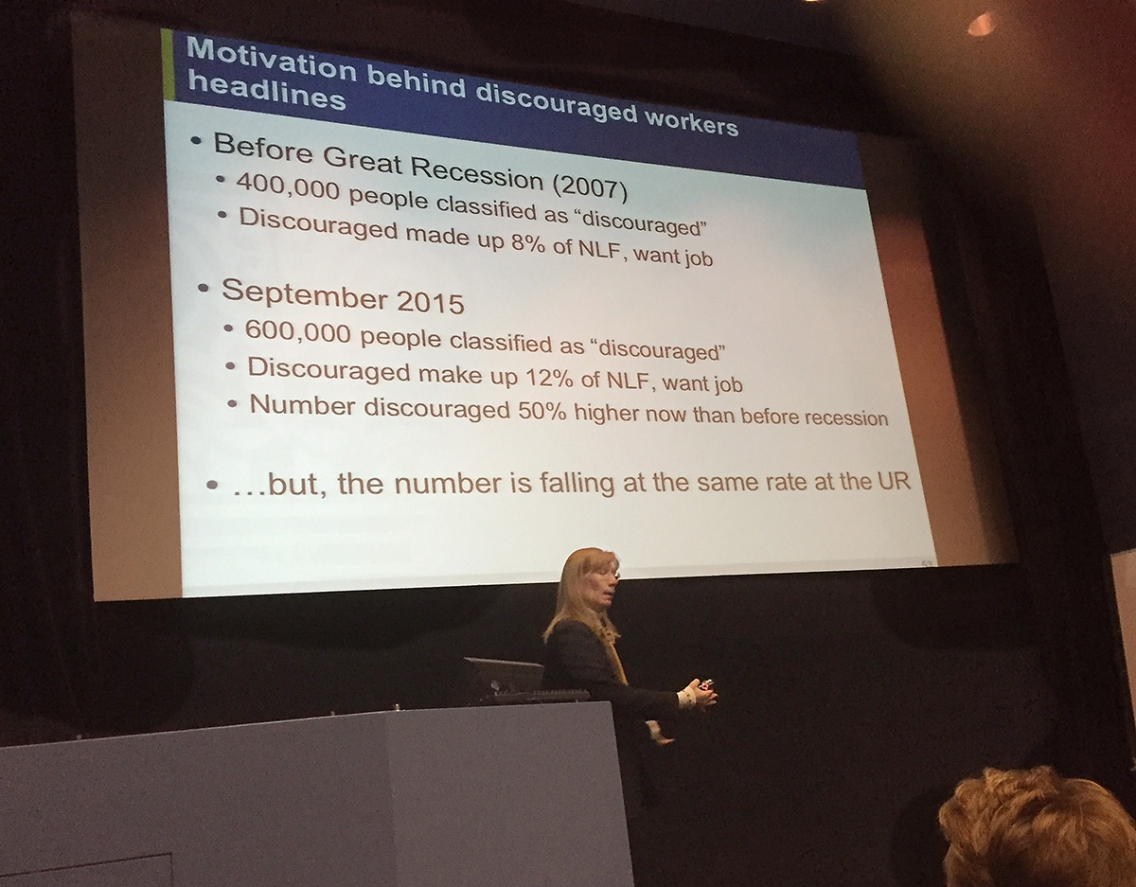Federal Reserve Official Delivers D.K. Smith Lecture

MIDDLEBURY, Vt. – Julie Hotchkiss, a senior policy analyst with the Federal Reserve Bank of Atlanta, used data from the U.S. Bureau of Labor Statistics to disprove headlines in the mainstream media at Middlebury College’s annual D. K. Smith ’42 Economics Lecture.
Students and faculty filled Twilight Auditorium to near overflowing on October 16 to hear the research economist’s lecture titled “Can We Believe Everything We Read? The U.S. Labor Market in Perspective.”
Hotchkiss’s 40-minute lecture was like a master class in labor-force economics applied to some of the prevailing beliefs about the U.S. economy. She explained how the unemployment rate is calculated, defined the term “discouraged worker,” and showed historically how recessionary periods have affected unemployment.
She pointed out that her opinions are her own and not those of the Federal Reserve system, and then disproved Gallup CEO Jim Clifton’s claim “the 5.6 percent unemployment rate [as of February 2015] is a big lie,” and refuted the Guardian’s claim that “dips in unemployment are largely due to people giving up the search for work.”
“The current 5.1 percent unemployment rate is on par with what it has been during previous recoveries” from recessionary periods, the former professor of economics at Georgia State University said, and Gallup counts people who technically should not be considered as unemployed.
The Guardian’s claim is false too, she said, because “the data shows the number of discouraged workers is coming down at the same rate as the number of unemployed, so the unemployed are not flowing into the discouraged [category].”
Hotchkiss provided both statistical and practical definitions of the key terms: high paying jobs (managers, professional, and technical positions paying about 1.5 times the median wage), mid-high paying jobs (production work and construction trades paying slightly above the median), mid-low paying jobs (sales and administrative office positions paying about 80 percent of the median), and low-paying jobs (farm workers and food-preparation jobs paying about 60 percent or less of the median).

She posted on the big screen in Twilight Auditorium headlines such as the Washington Post’s “Low wage jobs have been dominating the U.S. economy,” and the New York Times’ “The recovery has created more low-wage jobs than better-paid ones,” and in both instances she used data to invalidate the claims.
The notion that part-time jobs are taking over the American economy is not true either, Hotchkiss explained, because data shows that the majority of jobs being produced today are full-time, higher-wage positions.
The recipient of a Ph.D. from Cornell, Hotchkiss challenged the belief that the country is not producing enough college grads to meet the demand. The reality, she said, is the demand will grow by 1.3 percent per year while the number of college grads is increasing at the rate of 3.3 percent annually.
The guest speaker charted changes in the labor force’s willingness to work and discussed labor force growth policy options such as immigration, minimum wage, family planning, access to education, and incentives to delay retirement. “Weak long-term growth” in the labor force could threaten economic growth, but the government has “myriad of policy choices to affect both population growth and [workers’] willingness to participate” in the labor force, she asserted.
A member of the Federal Reserve staff since 2003, Hotchkiss concluded with “the current labor market is on track” and the public “needs to read the headlines with healthy dose of skepticism.”
Professor Phani Wunnava, who holds the David K. Smith Professorship in Applied Economics at Middlebury, introduced Julie Hotchkiss at the lecture.
The D.K. Smith Economic Lecture Series honors one of the pillars of the economics department who passed away in 2006. After graduating from Middlebury in 1942 and serving in the U.S. Navy during the Second World War, Smith earned master’s and doctoral degrees in economics at Harvard University. A native Vermonter, he returned to Middlebury in 1950 and served 37 years on the economics faculty, including 15 years as department chair.
Professor Smith’s friends, family, and former students and colleagues created the lecture series to ensure that there would be a lecture or forum on applied economics every year at Middlebury.

